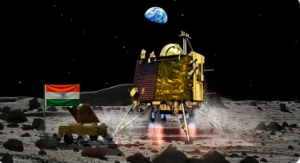You’ve surely noticed how the moon appears larger near the horizon than it does high in the sky. You’ve been seeing a natural optical illusion. The Moon Illusion makes the moon look larger near the horizon than it does higher in the sky. Even though it has been recognised and documented by numerous civilizations since ancient times, the phenomenon is currently being contested.
Here are all of the probable explanations:
Also Read | What happens to our brains in space? Israeli startup aims to find out
Depth perception and depth cues
According to one idea, depth perception is key in how we perceive the moon at the horizon. We view the moon at the horizon when there are depth cues such as mountains, forests, oceans, and other sceneries. The depth signals vanish as the moon rises higher in the sky.
As a result, we view the moon from a greater distance on the horizon than we do when it is high in the sky.
Distance and refraction
Claudius Ptolemy, a mathematician and astronomer, explained the Moon illusion using atmospheric refraction, which is the deflection of light or other electromagnetic waves from a straight line as they move through the atmosphere.
He then stated that it happens because of seeming distance.
Also Read | Alcohol consumption may cause brain damage: Study
The hypothesis of the angle of regard
According to the ‘angle of regard’ hypothesis, the Moon illusion is caused by changes in the location of the eyes in the head as a result of variations in the angle of elevation of the Moon.
Many specialists have disproved this once-popular belief.
Colour
For individuals who live in rural regions, the moon seems crimson and bigger during harvest season. As the sky becomes coated with dust and other particles, the effect is formed.
Also Read | How vampire bats got a taste for blood: Explained
Aspects of sight and atmosphere
When it is filthy, cloudy, or smoky outdoors, the moon seems bigger on the horizon. After a forest fire or a period of urban pollution, the illusion may appear sharper.






